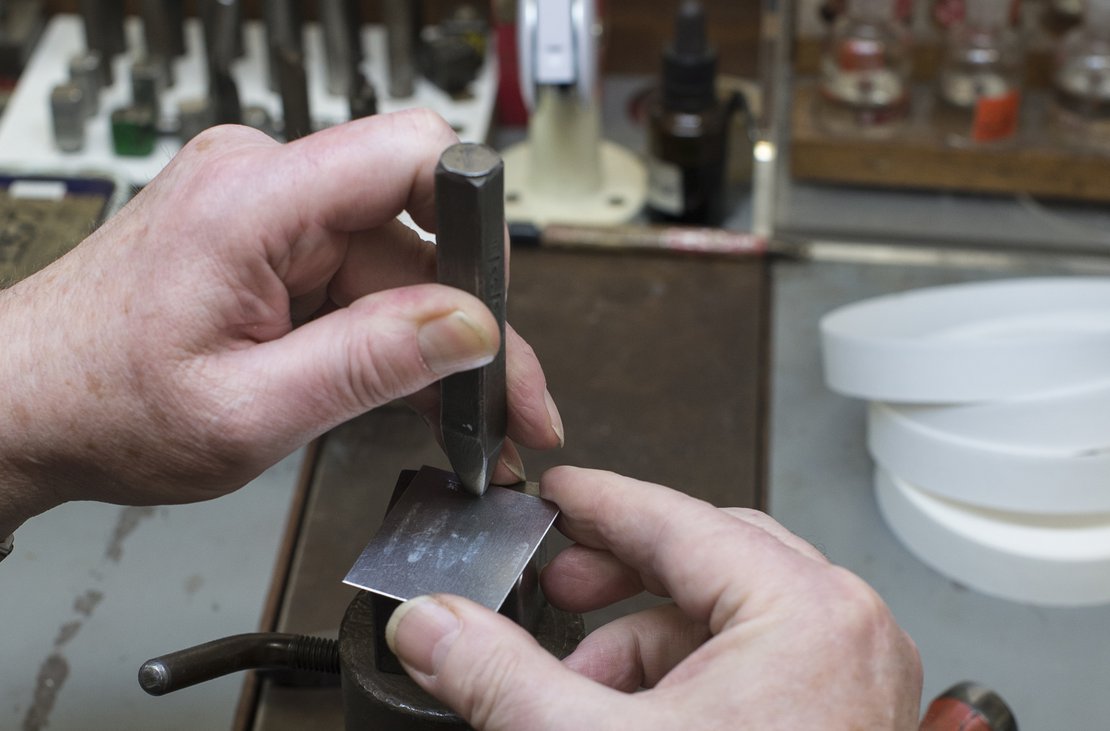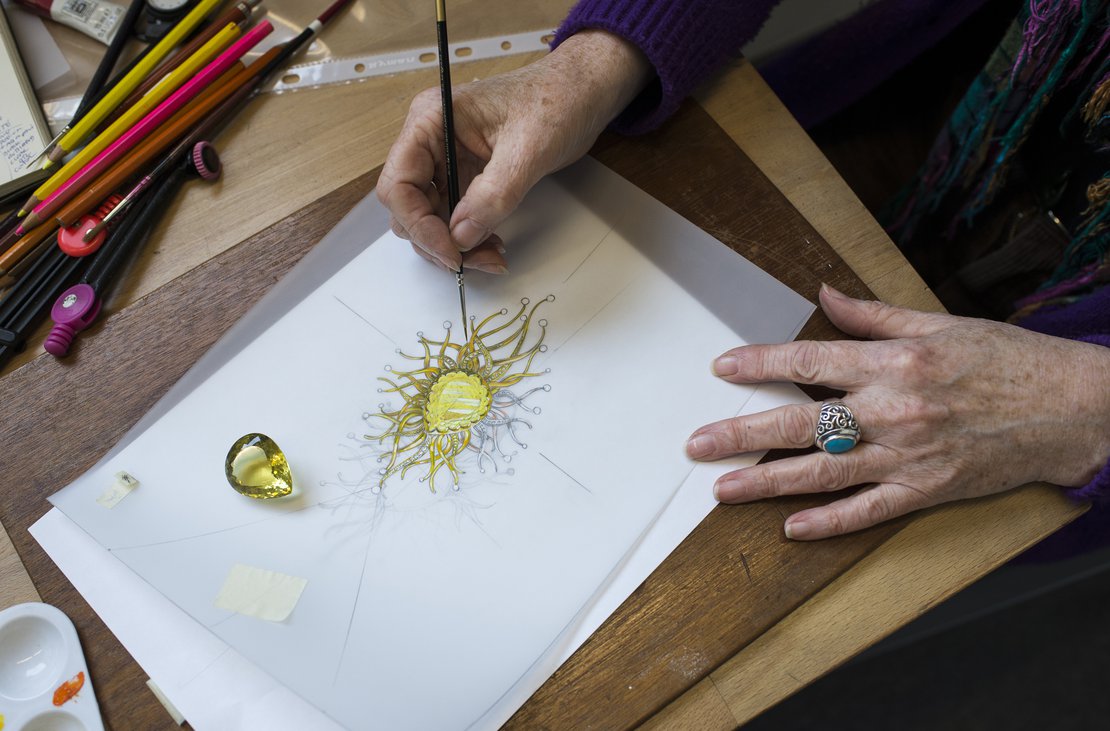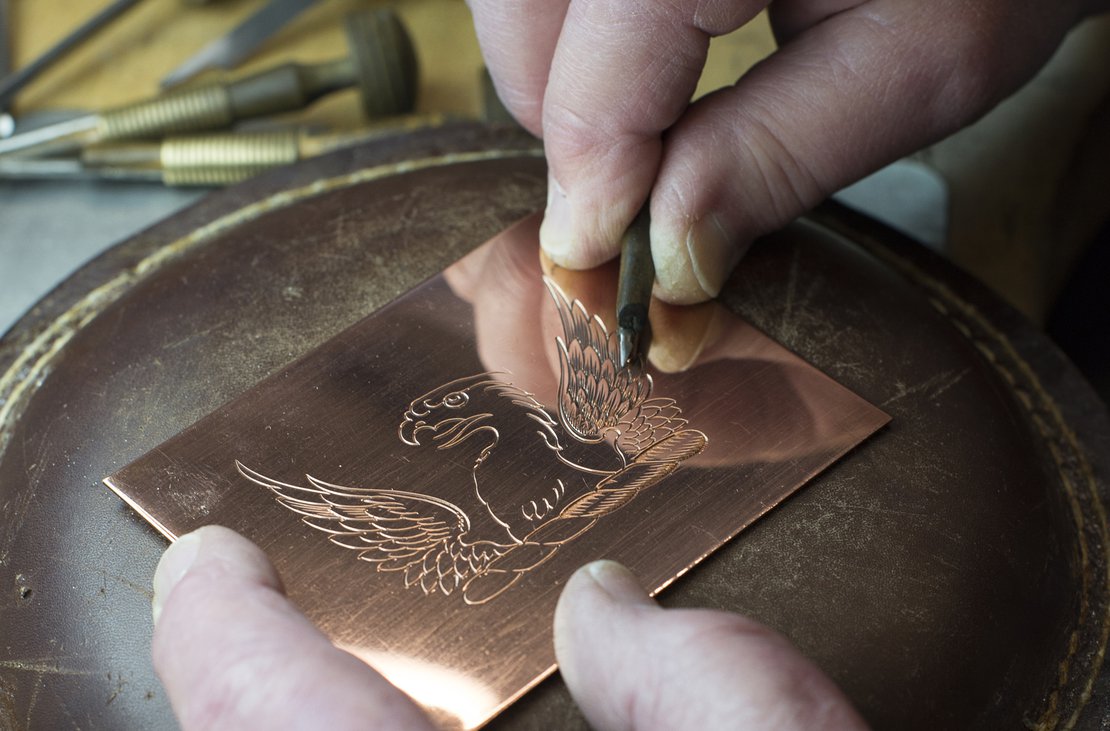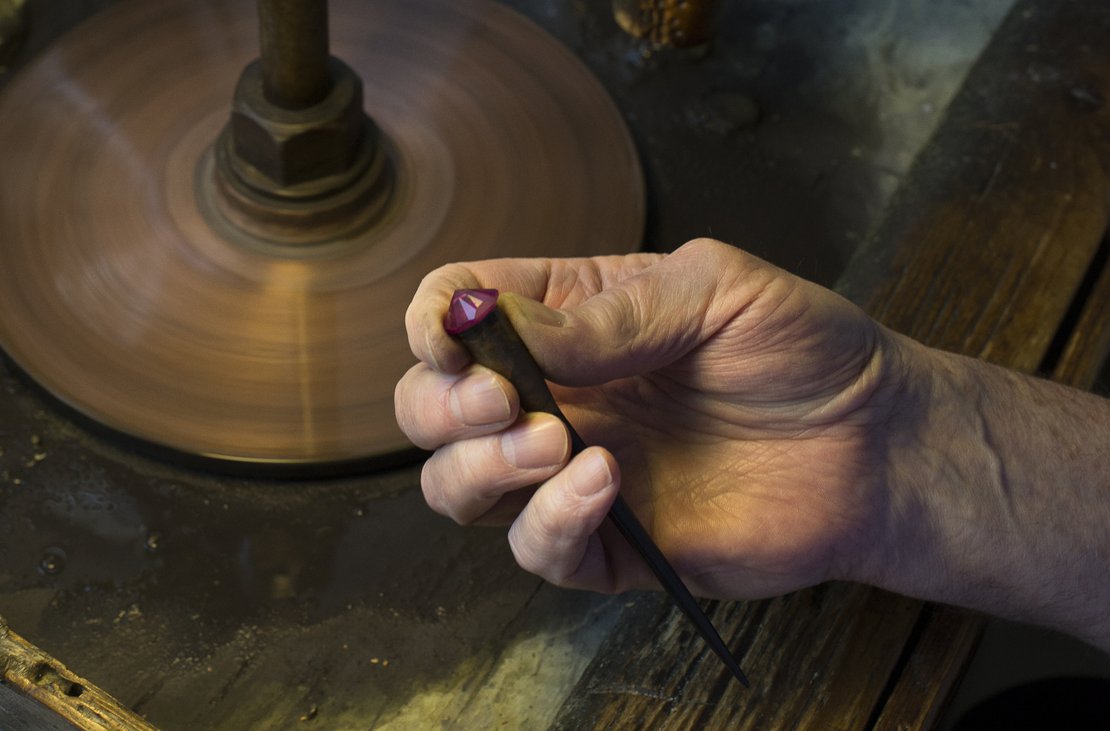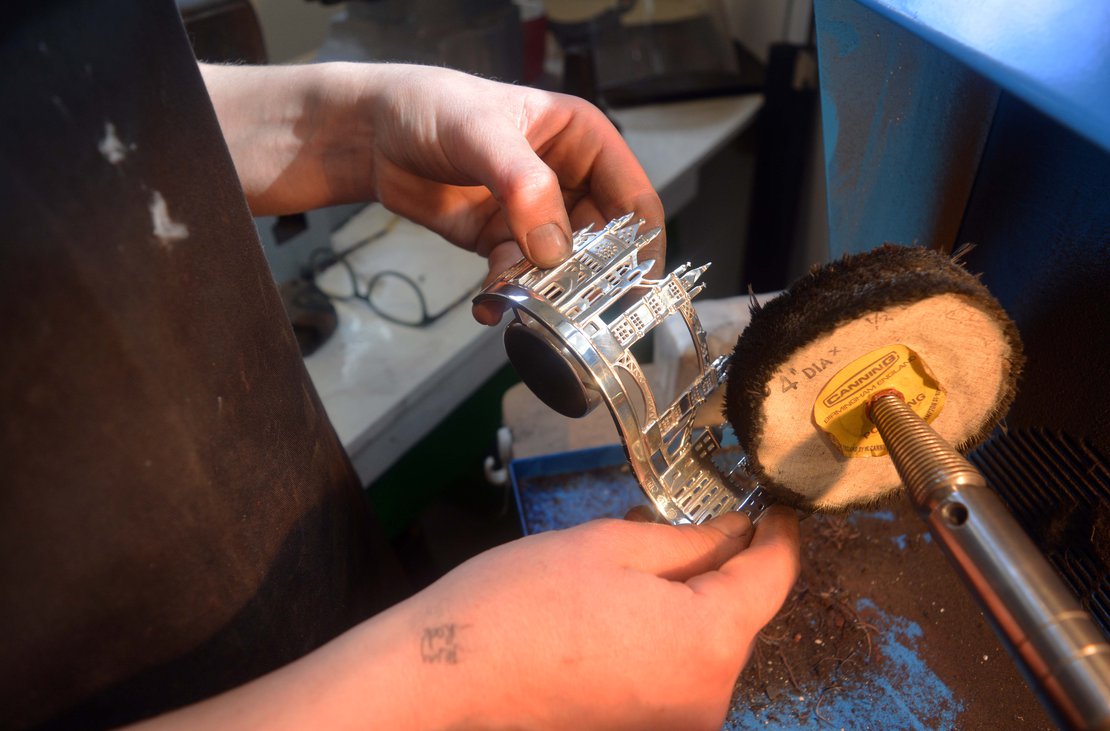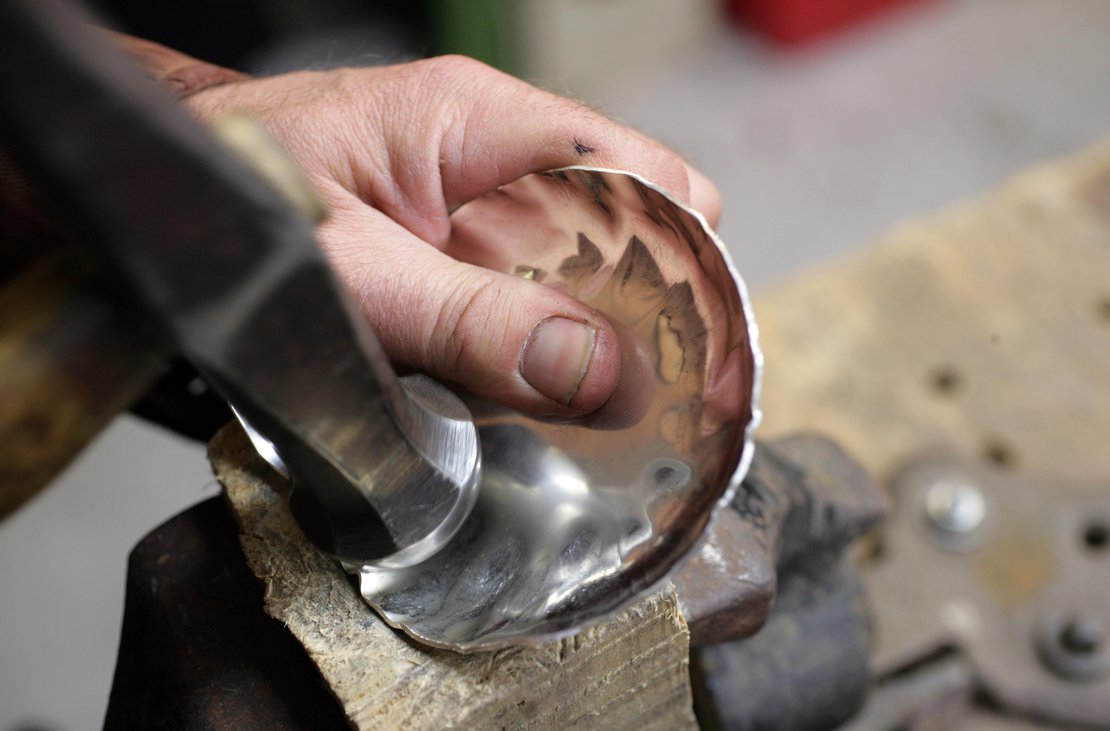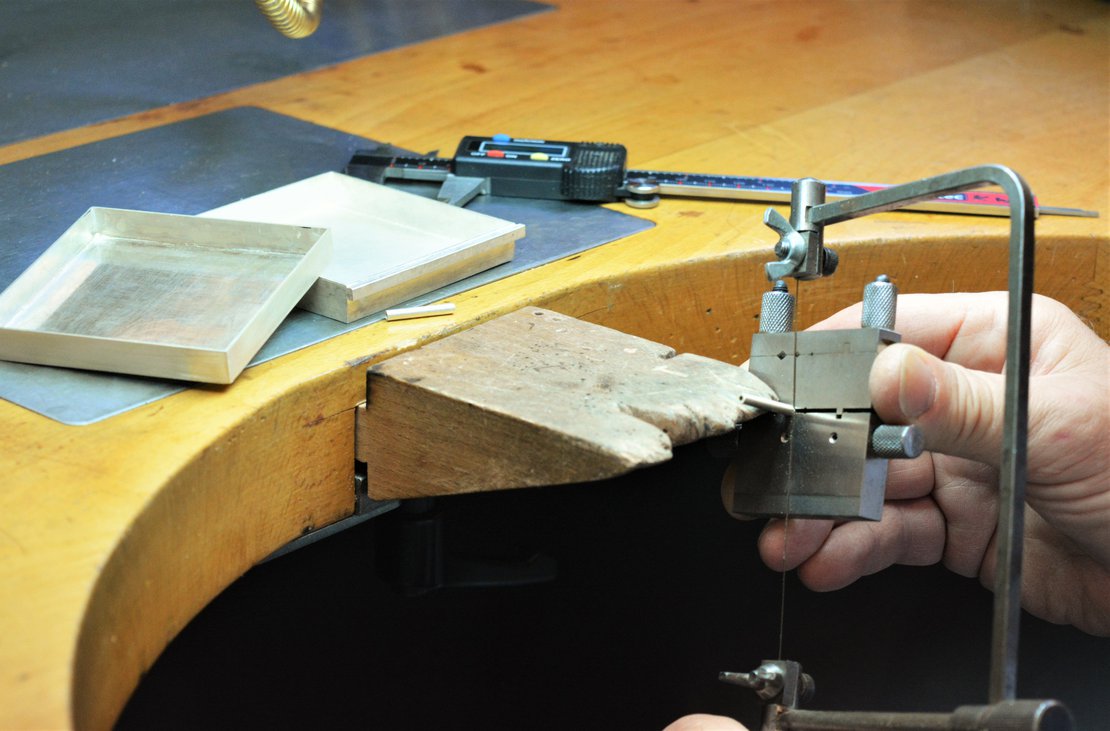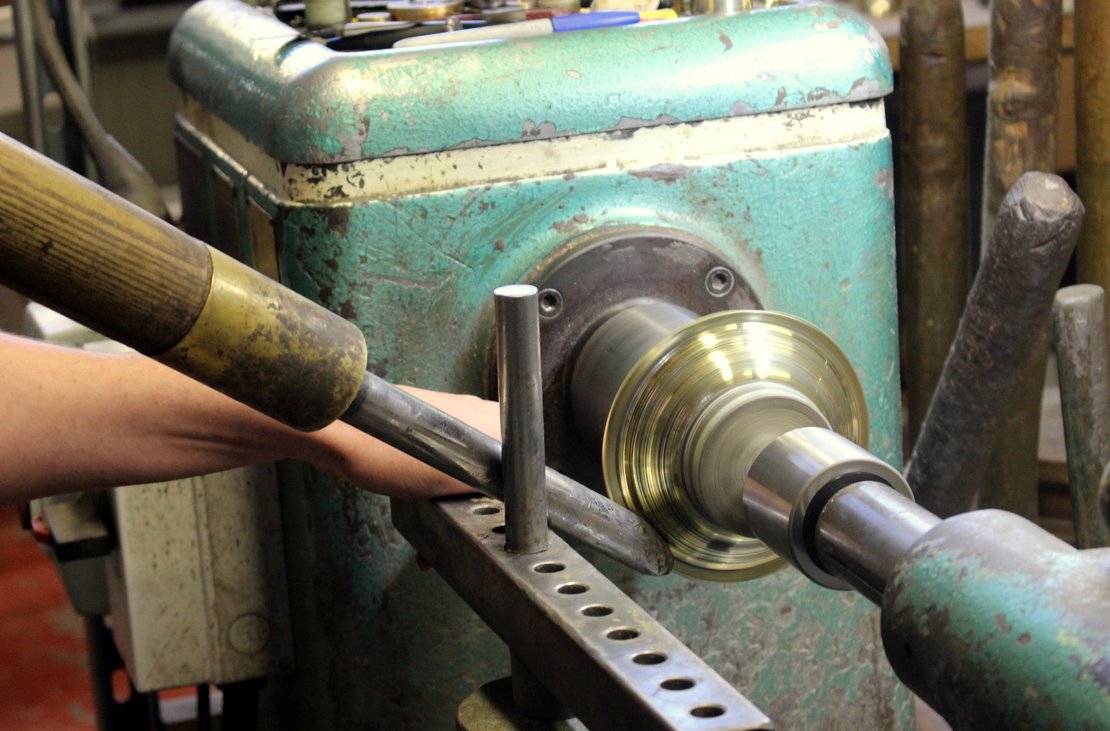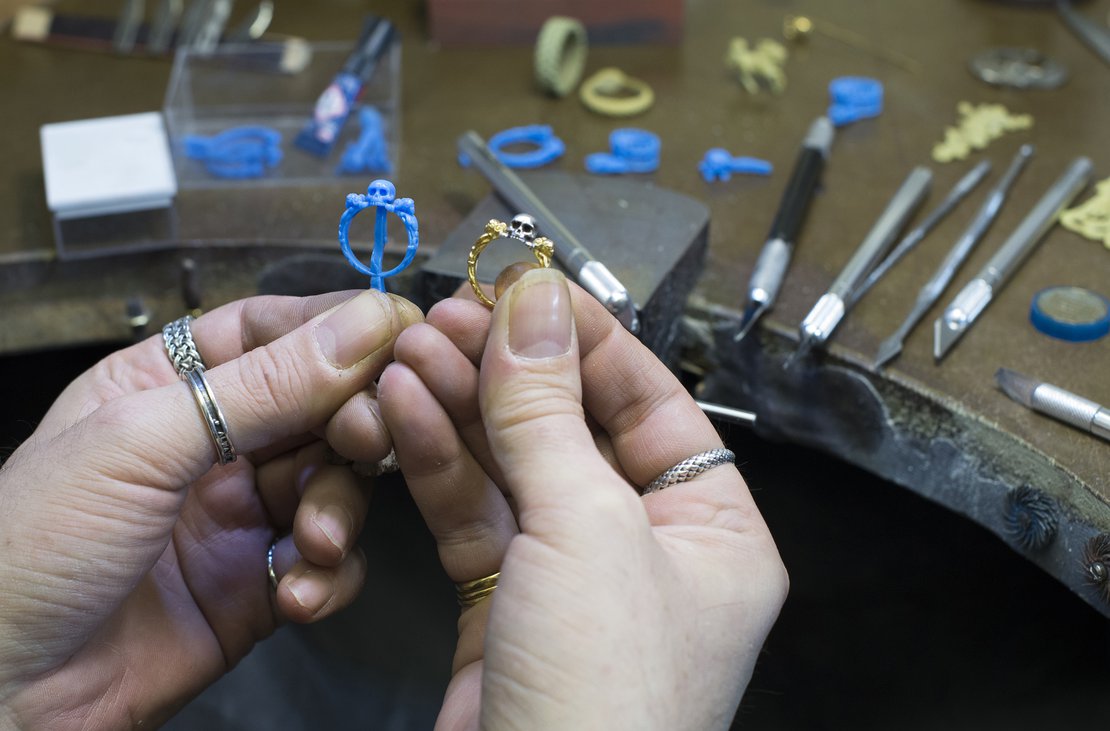Chaser
A chaser is a specialist silversmith who has perfected the complimentary skills of chasing and repoussé; the techniques of applying a three-dimensional decorative pattern to the front and back surfaces of a piece of work.

Chasers use tools including chasing hammers and shaped steel punches to decorate the front side of a metal object to give it shape and form. Repoussé or embossing is the process of working the metal from the back to give a higher relief. The two techniques are often alternated to arrive at the finished design. A chaser works in malleable metal such as or copper when looking to ornament a piece of work. Their tools allow them to raise, depress or push aside the metal without removing any of the material.
“Chasing is one of the oldest forms of metal decoration. Tutankhamun’s gold mummy mask was made using this technique.”
What personal attributes are useful for a chaser?
To be a chaser you will need to be:
- Interested in craft, design and working with metals
- Good at working with your hands – you will need to have good manual dexterity as you will be using various tools to create intricate patterns
- Creative and artistic – you will need to be able to draw and to transfer a design into metal. Being good at interpreting two-dimensional designs into suitable three-dimensional work will also be important
- Comfortable working with an open flame and getting dirty as you will be working with pitch, a mixture of bitumen (tar) and plaster
- Patient and self-disciplined with the ability to work on a project for prolonged periods of time
- A perfectionist
- Able to explain and talk about your work; to communicate your ideas and requirements
- Able to adapt and make your own tools when required for a job
Chasers will benefit from having a background that allows you to better understand how the metal behaves. It is also beneficial if you know about other techniques such as engraving or polishing which can be used in conjunction with chasing. You need to be creative not just with your designs but also with the tools you use. Exceptional chasers are known to create their own punches which allow them to achieve unique ornamentations.
What will my working life be like as a chaser?
Chasers work in a workshop or studio, normally from a work bench. You can either be self-employed or employed to work for a company. If you work for a company you are part of a team, will earn a wage and have a fixed working schedule, normally from Monday to Friday.
If you are self-employed you may have a workshop at home or shared with other craftspeople. As a self-employed outworker you will engage directly with your customers to create bespoke pieces or you might be approached by a company with designs that you will be tasked with translating into metal. Alternatively, you might decide to design and sell your own pieces. Designer-makers may choose to sell their pieces through a gallery, retail space or directly to customers at craft fairs for example. In this case you will need to develop good business, finance, marketing and interpersonal skills.
Within your work you must be able to adhere to industry health and safety requirements; understand the safe storage, handling and disposal of harmful materials used in the workshop including the risks involved in the use of pitch; know how to safely operate and maintain your machines and tools and learn how to adequately process your materials. As a chaser you will use skills and techniques including interpreting and executing working drawings; having the ability to work out what materials are required for your project; knowing the specific uses of chasing tools and how to make and maintain them including hardening and tempering; knowing the different sorts of pitch available and how to use it for different types of work; chasing over cast patterns, and snarling.
You will find it useful to maintain a working knowledge of the history and tradition of chasing and repousse. You can expect to work with all types of , gold, gilding metal, copper , brass, tool steel, pitch, lead and Plaster of Paris. And you will learn how to use tools including chasing hammers, chasing punches, measuring and marking tools, files, soldering equipment, personal protective equipment, modelling tools, burrs, drills and engraving tools. You should receive training in all of these, as required.
A day in the life of a chaser - Jessica Jue
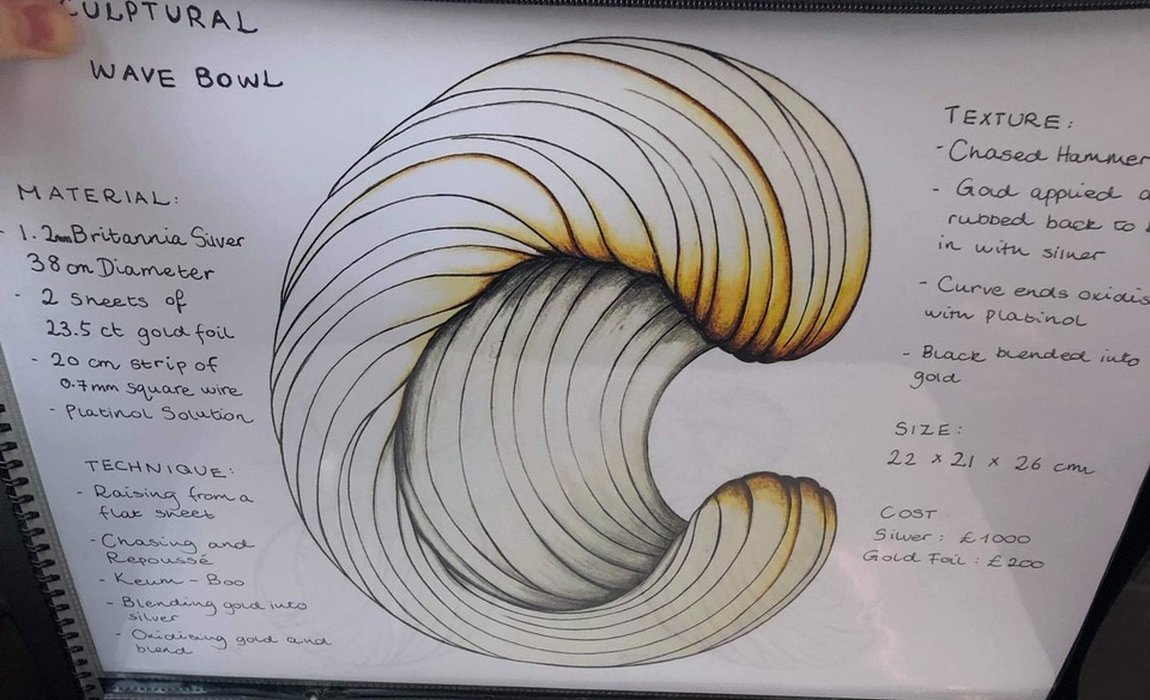 Sketches and designs for a new piece of chasing.
Sketches and designs for a new piece of chasing.
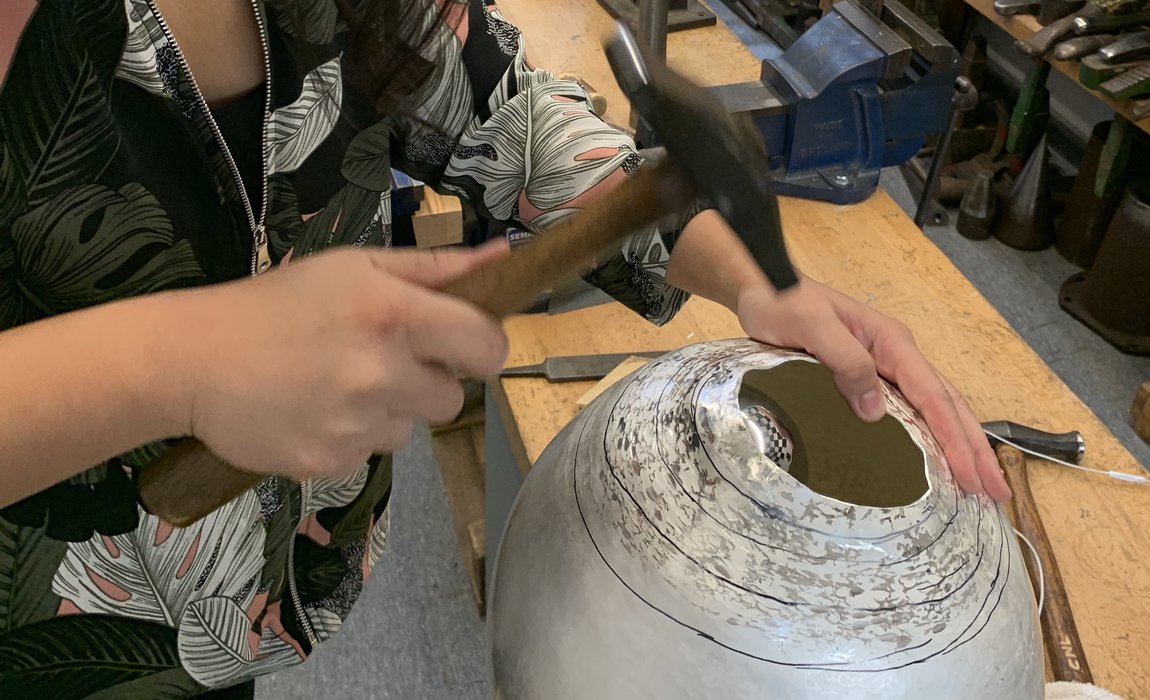 Raising a piece of silverware for chasing
Raising a piece of silverware for chasing
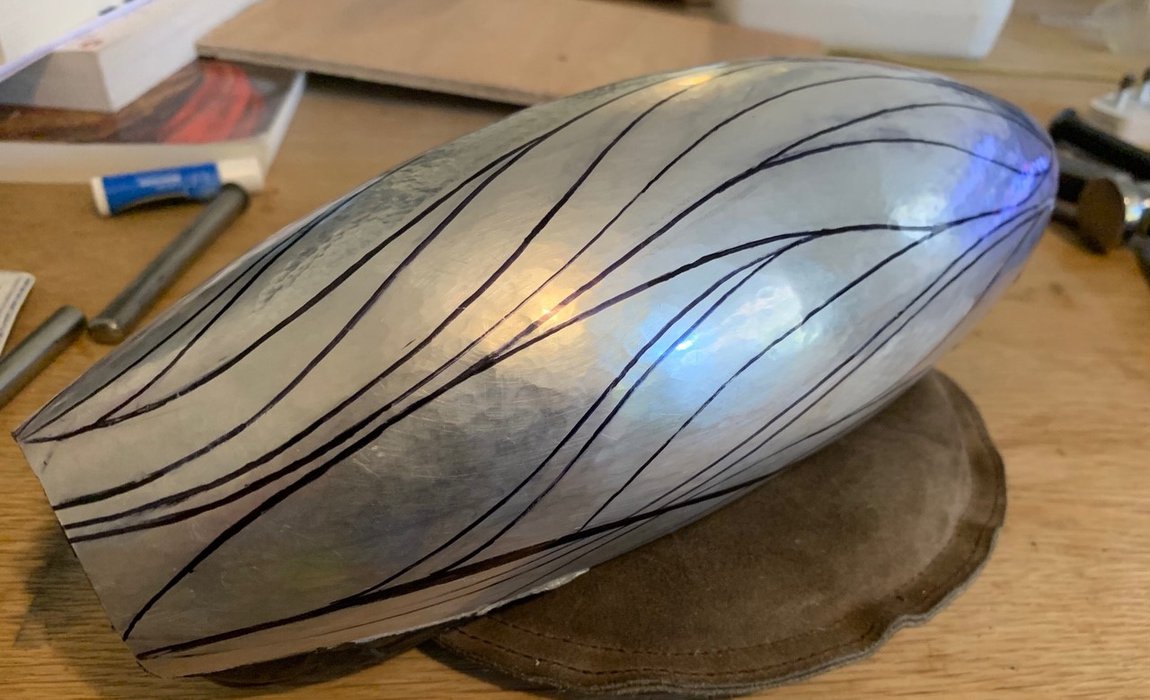 Drawing lines onto silver for chasing.
Drawing lines onto silver for chasing.
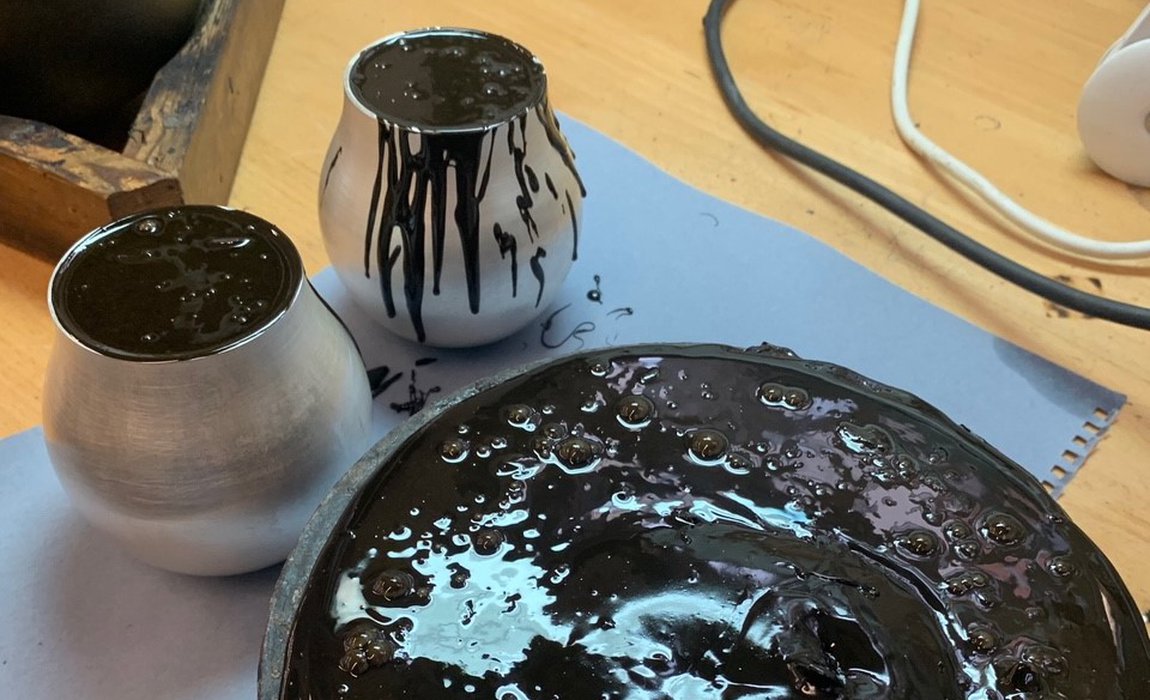 Setting up a pitch for silverware.
Setting up a pitch for silverware.
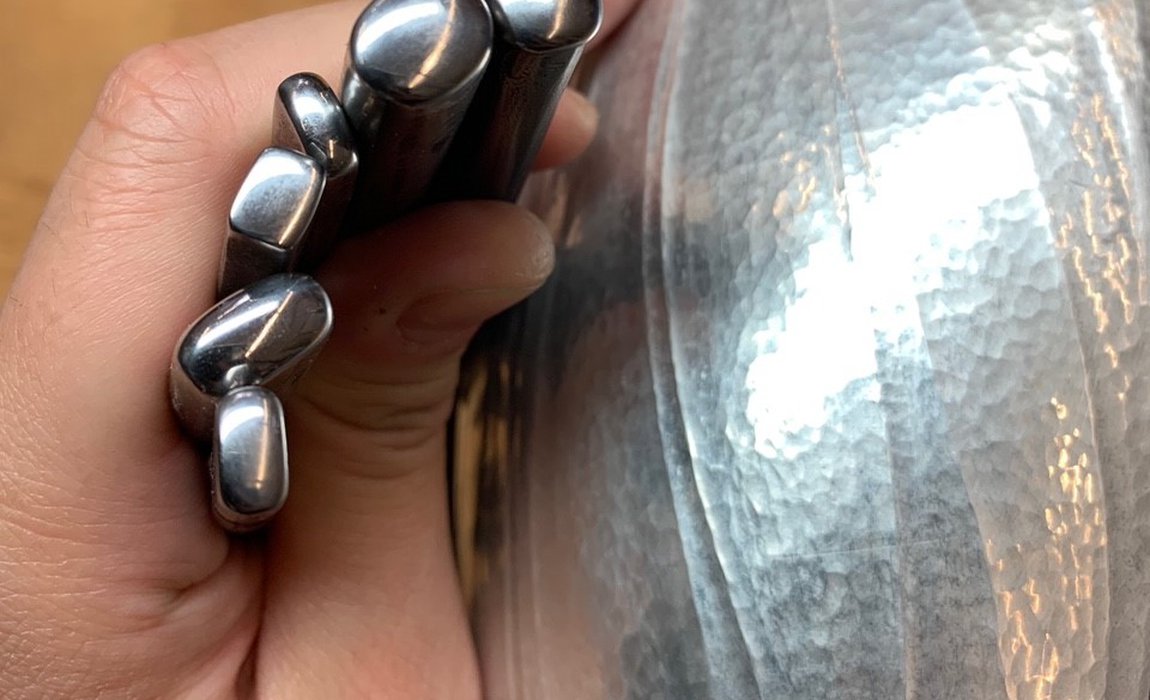 Some of my chasing tools.
Some of my chasing tools.
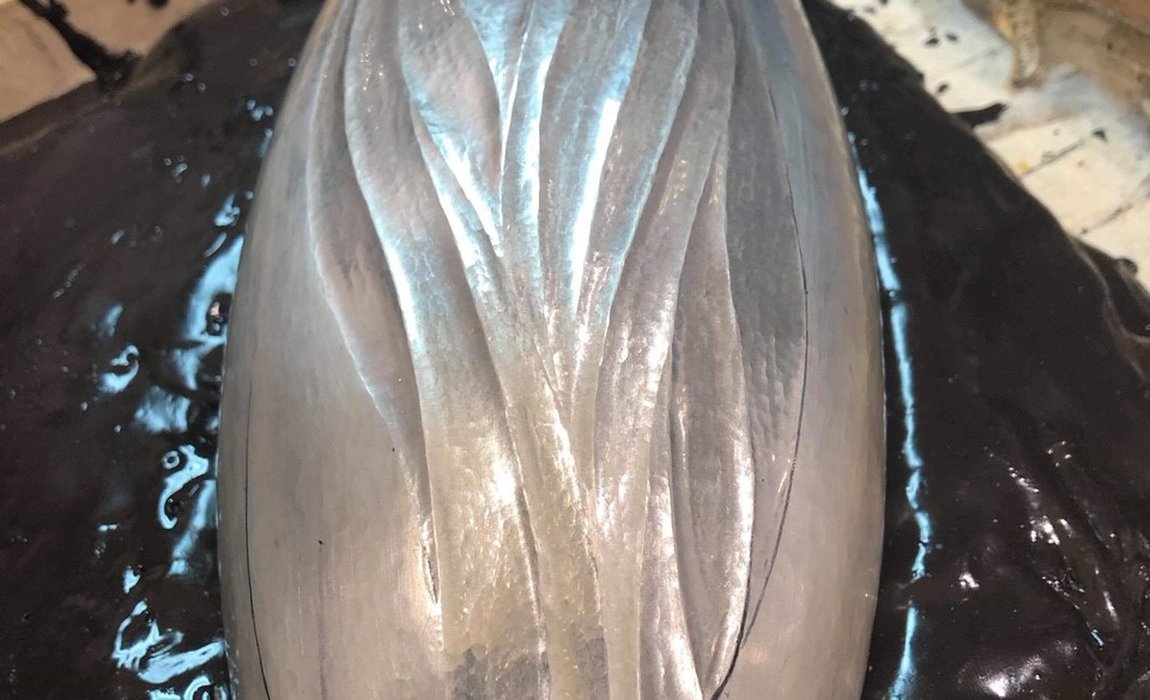 Chasing and repousse of piece whilst secured in pitch.
Chasing and repousse of piece whilst secured in pitch.
Training or qualifications: How can I become a chaser?
There are no specific academic qualifications required to become a chaser. Chasers tend to start as general metalsmiths and then perfect their chasing skills through practical training and experience. It takes hours and sometimes years of practice and perseverance to become an accomplished chaser so you should be committed to continuously learn from those that are more skilled.
There are several ways to start out in the jewellery, silversmithing and allied industries. Some people will choose to go straight into a job whereas others may wish to learn their skills via an apprenticeship or courses at a college, university or training centre. There are very few skill-specific qualifications available, but many courses provide an introduction to a range of creative skills. To find out more about different options and your potential route into a creative career within the goldsmithing industry click here.
What can I earn as a chaser?
As an apprentice or someone who is training you should be paid at least the National Minimum Wage for your age and this rate should increase as you get closer to completing your training. Apprentices undertaking traditional training may start out earning around £12,000 – £13,000 per year and be closer to £17,000 – £18,000 at the end of their four-year apprenticeship. Once you have completed your training your earnings will vary depending on your skill and employment status.
Chasing is a niche skill and there are a limited number of practising chasers within the UK. If you are considering becoming a chaser you may wish to train in a complementary skill such as silversmithing. This may help ensure you are more widely employable.
Salaries for an employed chaser can start at around £22,000 - £25,000 per year in the first few years after training. This can rise to £28,000 - £35,000 for mid-career chasers and can reach £35,000 - £40,000 for the most experienced and skilled chasers working for a top silversmithing company.
If you are self-employed, being a chaser can be well paid if you have regular clients or constant sources of work, but it can be difficult if you are commissioned ad hoc. Chasers will often work on a commission basis and agree a fee per job, per hour or per day. Rates for this will depend on your experience, the type or complexity of the piece and the size or materials being used. No matter how you work your reputation is extremely important as the goldsmithing industry often operates on word of mouth recommendations and trust.
What industry membership bodies can I join?
The Goldsmiths’ Centre offer a range of membership options for people at different stages of their career. Joining a membership body or keeping up to date with industry events allows you to create a network with like-minded individuals. They might also run workshops to acquire new skills. See for example:
The Goldsmiths’ Centre
Association for Contemporary Jewellery
Cockpit Arts
Contemporary British Silversmiths
Craft Central
Crafts Council
Craft Northern Ireland
Incorporation of Goldsmiths
Institute of Professional Goldsmiths
National Association of Jewellers
Sarabande
Society of Jewellery Historians
The Silver Society
Meet the makers

It’s very important to keep the craft of chasing alive - because it’s done entirely by hand, it’s very out of the ordinary.
Examples of chased work
The Goldsmiths’ Company Collection includes over 8,000 pieces of antique, domestic & contemporary silver, jewellery and art medals which were made in Britain between 1350 and the present day. The Company continues to purchase, and commission pieces each year and new contemporary pieces must demonstrate innovative design combined with excellent craftsmanship. Pieces are acquired from both established craftspeople and rising stars.
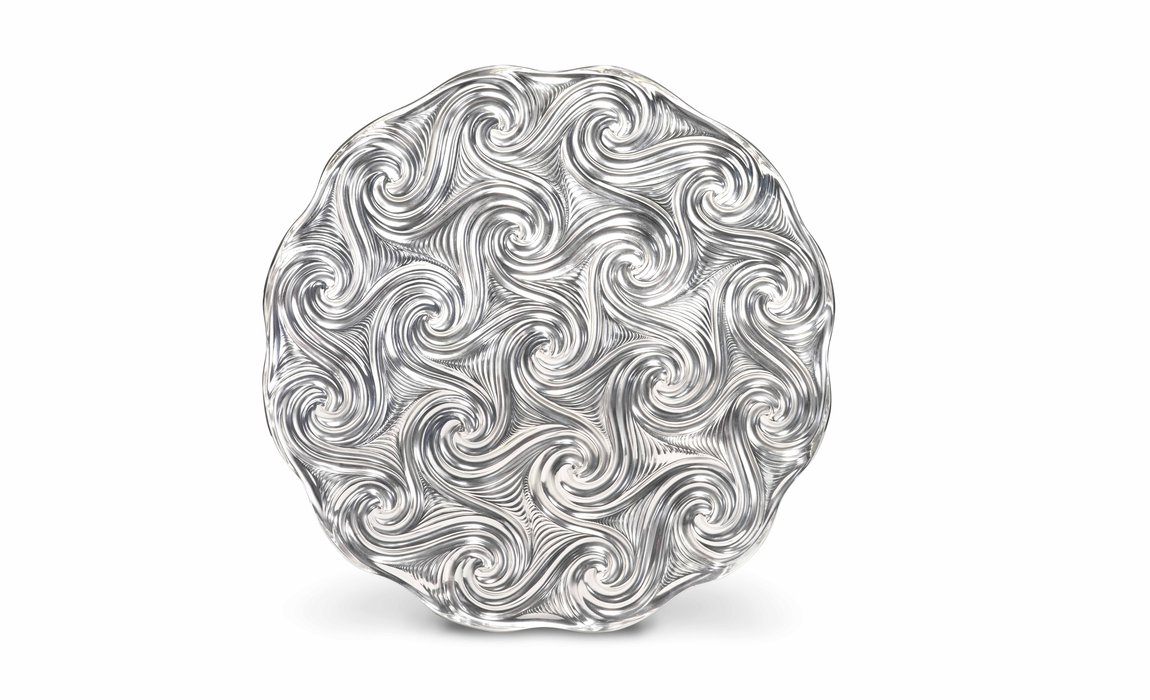 Miriam Hanid, Radiance Centrepiece, 2017 © Collection: The Worshipful Company of Goldsmiths
Miriam Hanid, Radiance Centrepiece, 2017 © Collection: The Worshipful Company of Goldsmiths
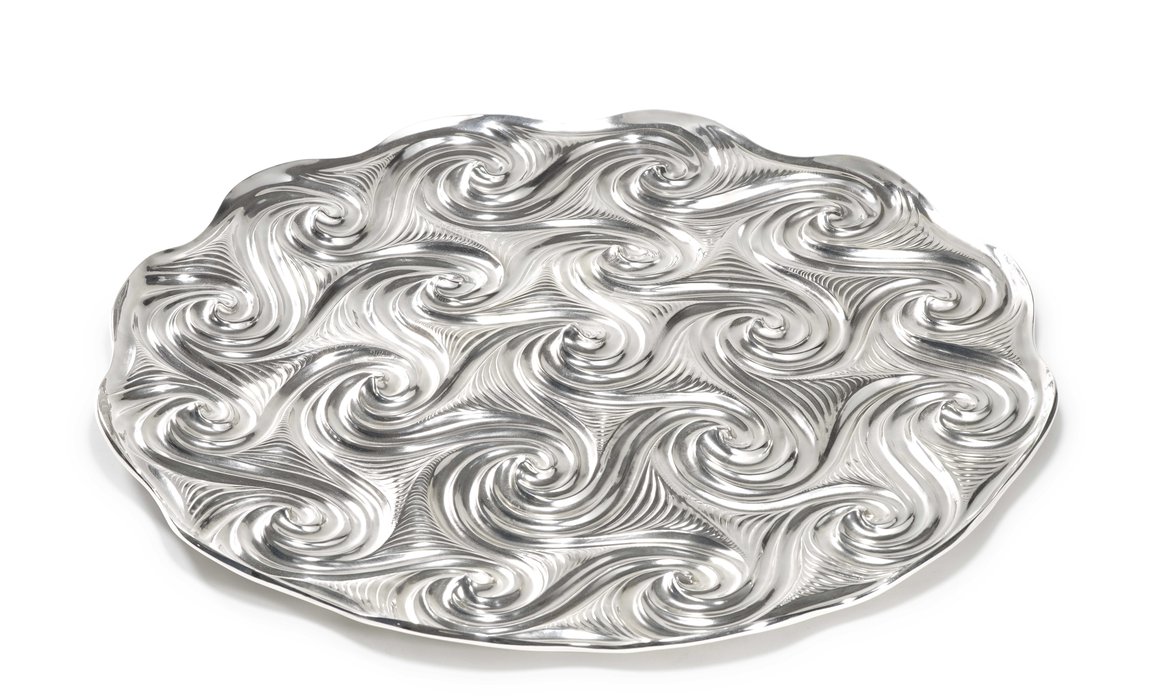 Miriam Hanid, Radiance Centrepiece, 2017 © Collection: The Worshipful Company of Goldsmiths
Miriam Hanid, Radiance Centrepiece, 2017 © Collection: The Worshipful Company of Goldsmiths
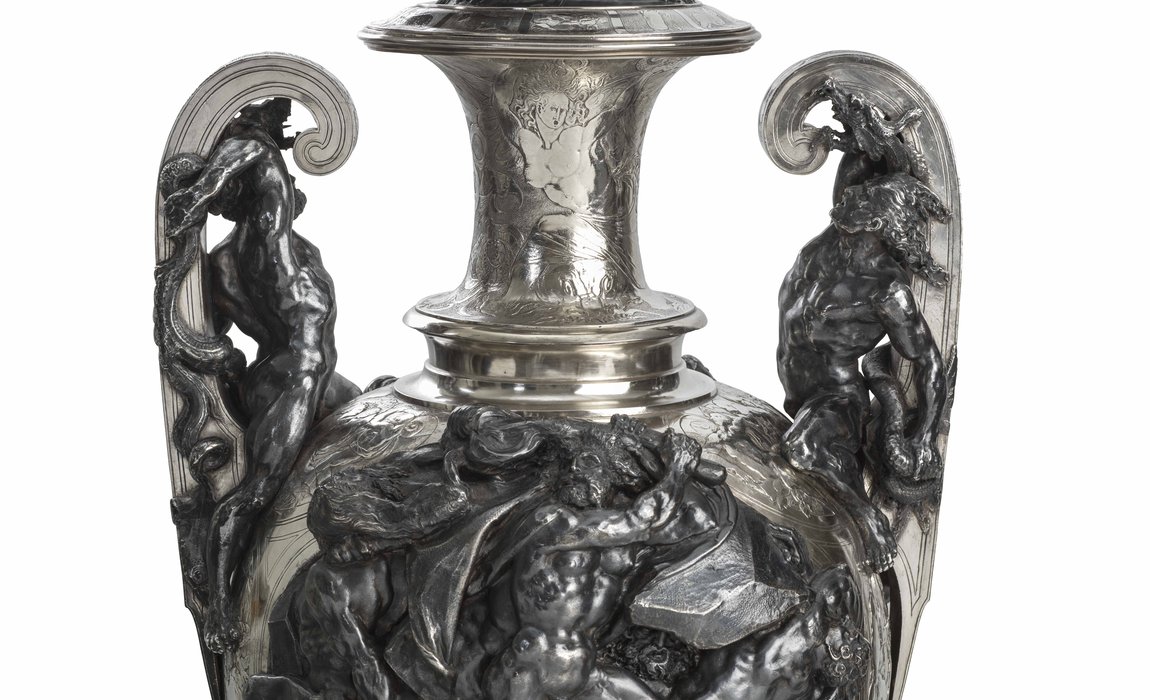 Antoine Vechte, Vase, 1847 © Collection: The Worshipful Company of Goldsmiths
Antoine Vechte, Vase, 1847 © Collection: The Worshipful Company of Goldsmiths
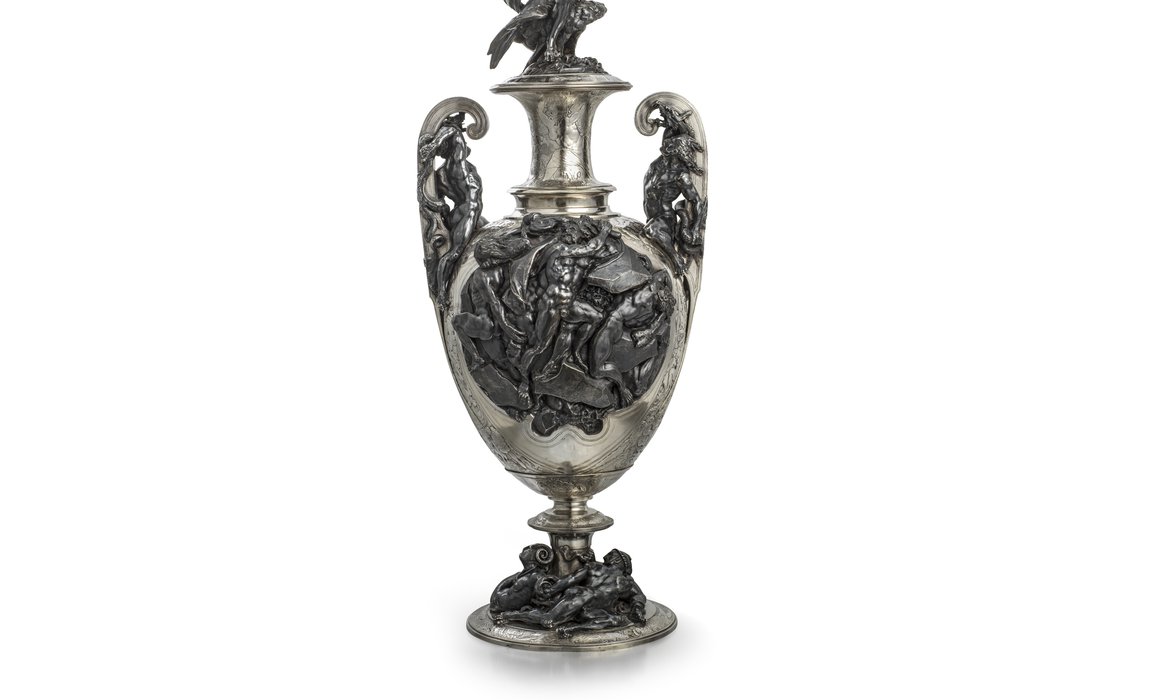 Antoine Vechte, Vase, 1847 © Collection: The Worshipful Company of Goldsmiths
Antoine Vechte, Vase, 1847 © Collection: The Worshipful Company of Goldsmiths
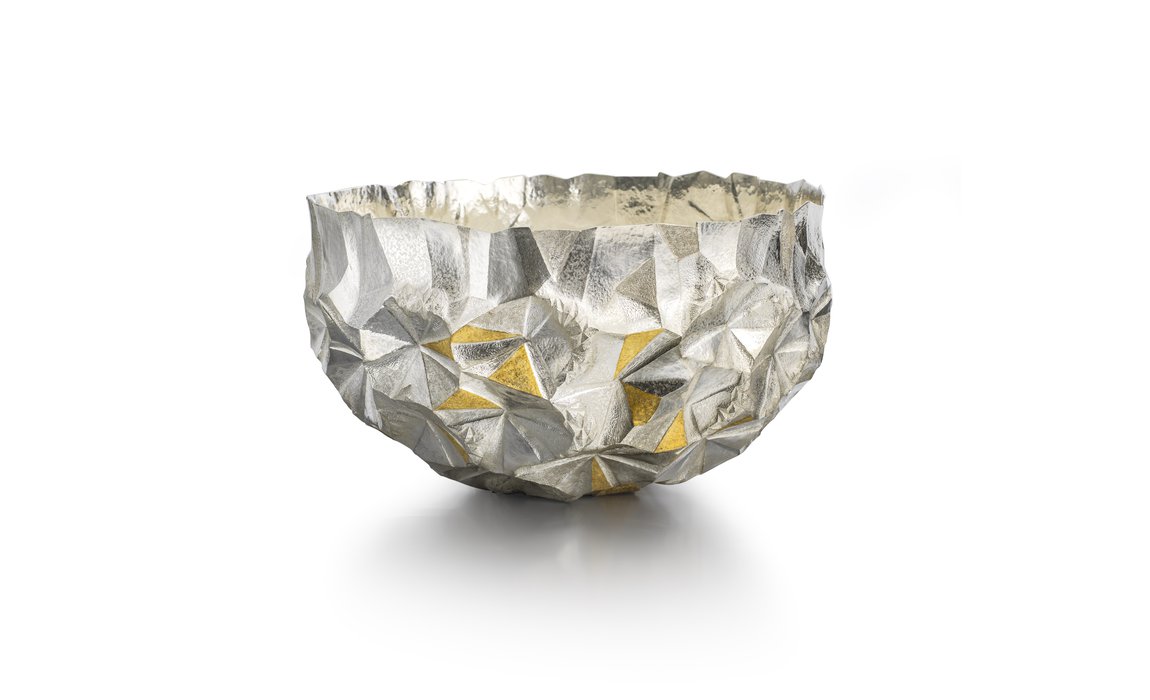 Yusuke Yamamoto, Sea Ice Bowl, 2018 © Collection: The Worshipful Company of Goldsmiths
Yusuke Yamamoto, Sea Ice Bowl, 2018 © Collection: The Worshipful Company of Goldsmiths
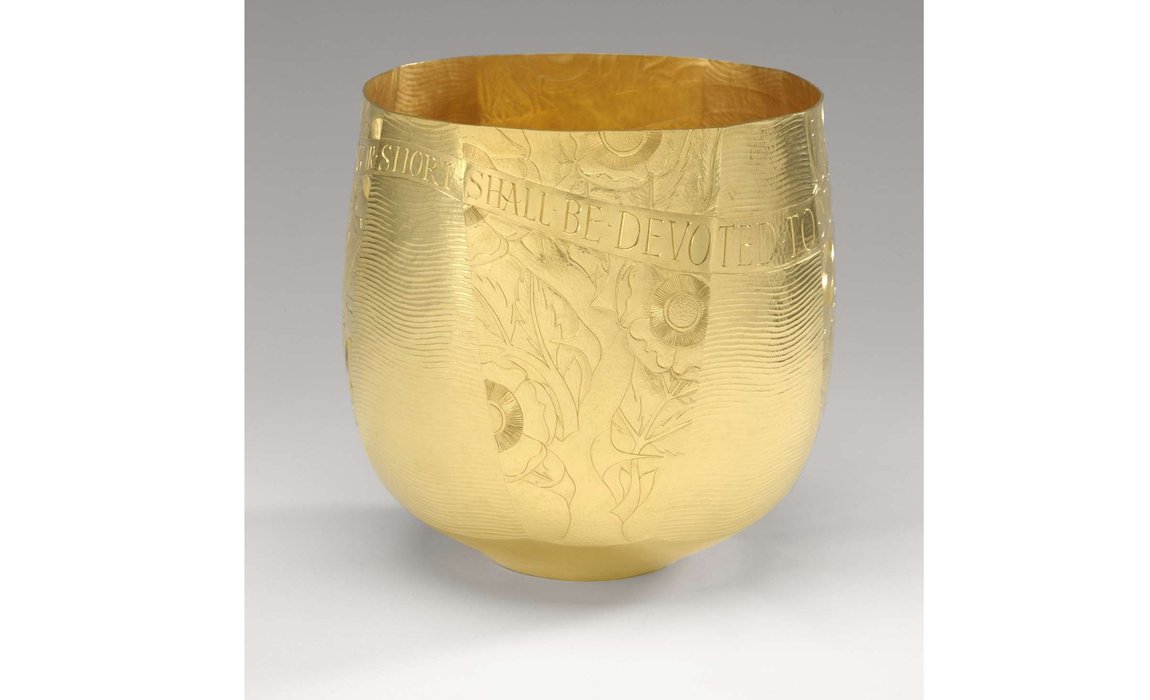 Michael Lloyd, Golden Jubilee Bowl, 2002 © Collection: The Worshipful Company of Goldsmiths
Michael Lloyd, Golden Jubilee Bowl, 2002 © Collection: The Worshipful Company of Goldsmiths
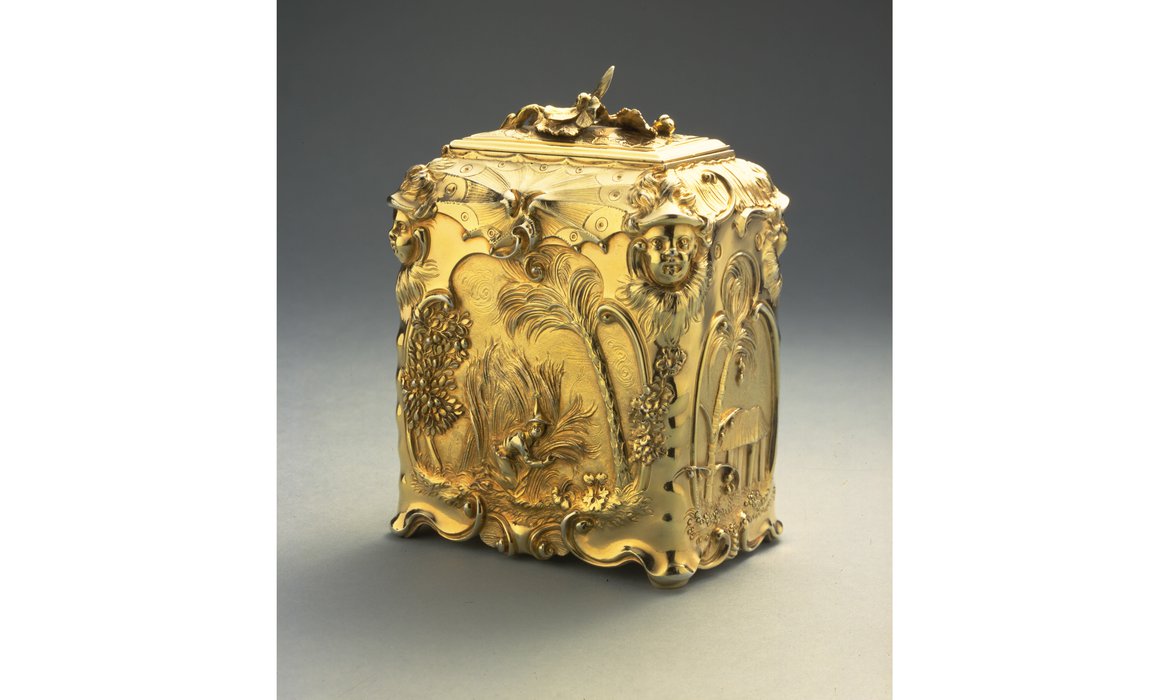 Paul de Lamerie, Tea Caddy, 1747 © Collection: The Worshipful Company of Goldsmiths
Paul de Lamerie, Tea Caddy, 1747 © Collection: The Worshipful Company of Goldsmiths
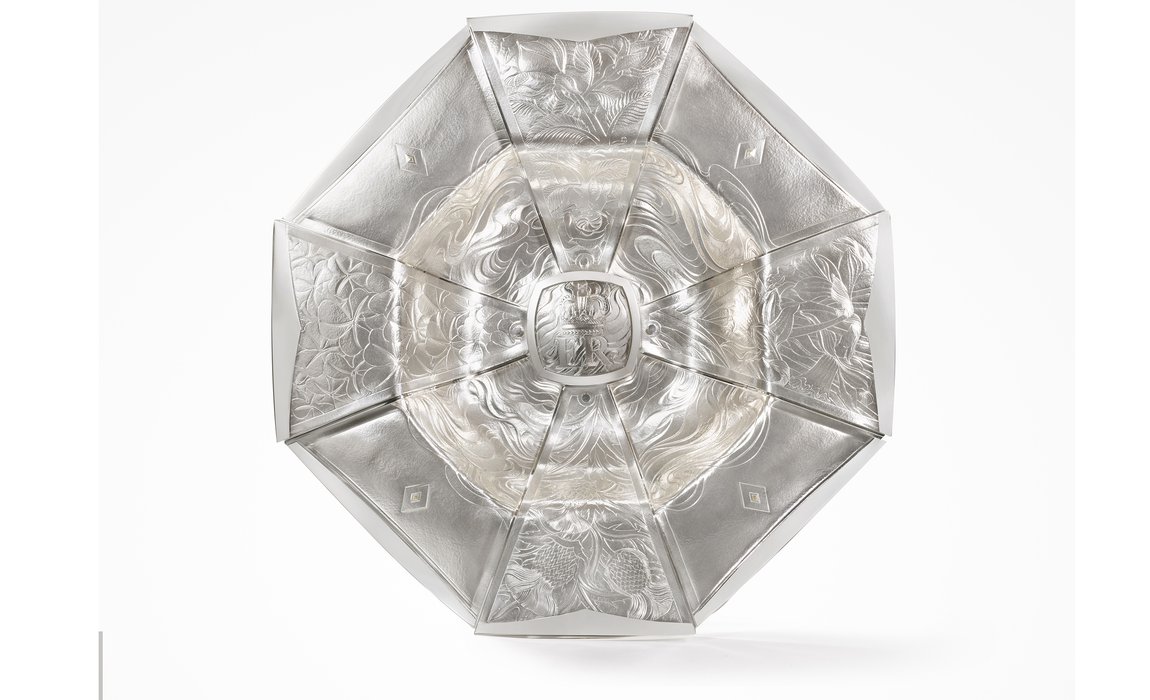 Rod Kelly, Diamond Jubilee Rosewater Dish, 2014 © Collection: The Worshipful Company of Goldsmiths
Rod Kelly, Diamond Jubilee Rosewater Dish, 2014 © Collection: The Worshipful Company of Goldsmiths
Further information
There are many reputable sources of information relating to the jewellery, silversmithing and allied industries. Whether you are trying to find information on technical skills, processes, materials, makers or inspiration some resources relating to chasing can be found below:
The Goldsmiths’ Company Library relates specifically to gold and silversmithing, jewellery, assaying and hallmarking, precious metals, and the City of London and its guilds. The Library includes 8,000+ books and 15,000+ images, magazines, periodicals and journals, technical guides, films, special research collections, design drawings produced during the early and mid-twentieth century by British or UK-based craftspeople and subject files on a wide range of industry related topics. The Library is also responsible for the Company’s archives, which date back to the 14th century.
Chasing related books include:
- Rupert Finegold and William Seitz, Silversmithing, Wisconsin, Krause Publications, 1983
- Brian Hill and Andrew Putland, Silversmithing. A contemporary guide to making, Ramsbury, The Crowood Press, 2014
- Tim McCreight, Complete metalsmith, Maine, Brynmorgen Press, 2004
Chasing related film content includes:
Oscar Saurin making the Spiral Beaker
